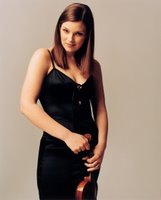
I have been listening to String Quintet by Schubert for days. It is the most delicate, miraculous music experience I've ever had: Often, I found that I was smiling with tears.
For such a music piece, words fail. However, I found a forum and Hoshang Dastoor's comment makes others redundant.
Schubert String Quintet is one of the noblest and most elevated examples of pure and direct communication with the Divine through the medium of instrumental music. One of the great tragedies of music was Schubert's most untimely passing at the age of 31. And yet an intimate experince of the Quintet tends to draw us inexorably to the conclusion that, having created this masterpiece, he realised the greatest heights, and we wonder whether he could ever have surpassed himself had he lived a normal life span.
Through the tragedy, then, we rejoice because here is a soul who has travelled very far indeed on his chosen spiritual path. One of the distinguishing features of Schubert's greatest music is the tremendous power of its expression. This is seen in his String Quartet No. 15 in G Major and also in the "Great" C Major Symphony. But it is in the Quintet that this power is at its most all-embracing and versatile. Here, Schubert takes you into regions of intense concentration, where there is a still centre that nothing can ever disturb or agitate.
The first such oasis is the second subject of the first movement, where you are carried in a gently meandering stream. There is a deep pulse here, subtle and ever-present, and a sense of quietly determined movement. And you wonder, as always with the quintessential late Schubert, how beautiful his tunes are and how difficult it is at the same time to grasp their true inner meaning.
One is soon immersed in that incomparable miracle of inspiration, the second movement, where you are suspended in an intense, dimensionless region, at once bottomlessly profound and unsurpassably lofty, and are utterly quieted in that trance-like meditation. This music cannot be described in ordinary terms - it suffuses the human organism wholly, and cleanses the spirit with infinite wisdom and gentlenes and love. Having said that, we find ourselves plunged into that stormy middle section - only to find to our vastest surprise that the agitation is but another side, a complementary aspect, as it were, to the initial, quietly meditative impulse of this movement. This section is introspective throughout the gamut of its hard struggles; its laboured breathing is worship, and we are climbing up a jagged mountain, returning to peace only after falling many times. And what a return it is! How is Schubert going to make it, we ask ourselves. And yet, the reprise of the opening is a pure miracle - the sense of moving from darkness to light. And even when out of that dim and troublous tunnel, we cannot forget our agitation easily. Schubert lets us come out of it gradually, on our own terms, as if he knows that any more abrupt transition would be shattering to our psyches. Nearing the end of the second movement is that celebrated timeless point where there is an attempt to re-enter that grim tunnel (we wonder why, in the first place), and we hover at the brink in a state of almost unbearable suspense, before we are finally led towards wonderflly calm resolution as the all-pervading tranquility of the final bars descends upon us.
We sonder whether Schubert will ever be able to recapture this state of being, especially after the tumultous and strident opening of the third movement. However, the trio does have a surprise in store - it is deeply mysterious and still, and we are led into yet another brief journey of the spirit. The greatest musical works are those that incorporate many diverse levels of intellectual and spiritual experience, and balance all of these so as to envelope and enrich our whole being. Such creations are indeed rare and the C Major Quintet is a supreme example.











